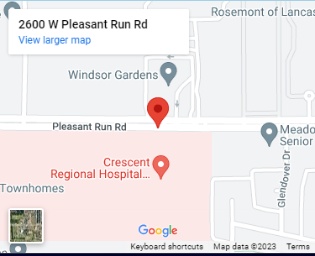Why is Pain Management Important?
20
Sep
2021

Why is Pain Management Important?
Pain management is the key to improving quality of life. Pain can keep you from doing things you enjoy, and prevent you from talking and spending time with your family and friends.
Pain affects your every mood and ability to think. Pain can even make it hard to eat and sleep, which can worsen other symptoms. Pain affects various health indicators of the body such as increase blood pressure and heart rate and delayed healing. Managing pain helps ease suffering.
Pain is among the most significant healthcare crises in the United States. Almost half of the Americans visit physicians with a primary complaint of pain each year. This makes pain the major reason for physician consultation in the United States. This is just the tip of the iceberg, as a substantial number of people with pain do not consult a physician.
The costs associated with treating pain are extremely high. It affects both the healthcare system and society at large. Individuals with pain will have a greater rate of utilization of the healthcare system along with a decreased rate of productivity. Although these costs are huge, one of the greatest tolls imposed by pain is on quality of life. Pain is extensively accepted to be one of the most important factors of quality of life. Pain impacts an individual's ability to perform various roles in society and to reach an acceptable level of satisfaction from functioning in those roles. Quality of life is more relevant to both patient satisfaction and willingness to adhere to treatment.
What is Pain Management?
Pain is the most common condition for visits to the physician. The pain occurs more as people age, and women are more susceptible to pain than men. Pain Management is a medical approach with scientific methods and alternative healing to study the prevention, diagnosis, and treatment of pain.
Pain is classified as acute or chronic, based on characteristics such as:
Acute pain - It is a normal response to an injury or medical condition. It usually starts suddenly and is short-lived.
Chronic pain - This continues beyond the expected time for healing. It normally lasts for longer than 3 months.
Pain may be described as anything from a dull ache to a sharp stab, ranging from mild to extreme. Pain might be felt in one part of your body or it may be widespread. Sometimes the pain feels like it is coming from one particular location, but it is the result of an injury or inflammation in another structure or organ. This is known as referred pain. It is caused due to network of interconnecting sensory nerves connecting different tissues. Pain in one area of the network can be mistakenly interpreted by the brain as occurring in a different part of the network.

What strategies are used for Pain Management?
The one-size-fits-all approach is not suited for pain management. Physicians' approach to managing pain depends on the type of pain, location, and individual. Various methods for managing pain are:
Lifestyle changes: Your day-to-day life activities play a key role in managing pain. Several positive lifestyle changes help in managing your pain. Eating a healthy diet, maintaining a healthy weight, reducing stress and proper sleep helps in relieving various types of pain. Staying physically active releases natural pain-relieving hormones such as endorphins in the body.
Medications & Drugs: If your pain is not treatable by lifestyle changes, a pain management specialist would opt for other options such as pain relievers. Pain relievers are of many types and levels. These would range from non-steroidal anti-inflammatory drugs for mild pain to narcotics like morphine and oxycodone for more debilitating pain. Chronic pain might lead to depression and anxiety. In these cases, anti-depressants may be prescribed. Anti-depressants are also useful in pain where the nerve damage is suspected. At times, the physician may include corticosteroid injections. Corticosteroids are useful to relieve any inflammation that is causing pain. If the patient requires continuous administration of pain-relieving drugs such as in spine pain, the implant of a pain pump or spinal cord stimulator may be recommended.
Therapies: Apart from medication and drugs, the physician may prescribe either physical therapy or exercise to treat the pain. Therapy, as well as exercise, increases the range of motion, decreases inflammation, and improves your mental and emotional well-being. Exercise induces the release of naturally occurring pain relievers called endorphins in the body. The benefits of exercise and therapy work synergistically together. They would cause the body to heal faster and alleviate the pain more effectively in comparison to drugs or other treatments methods. It is recommended to consult your pain management specialist to ensure that you are physically able to begin working out or start any new exercise.
Non-traditional methods: Various non-traditional pain management treatments help to relieve pain along with relaxing the mind and body. The effectiveness of these treatments depends on the type of pain and its severity. These would include: relaxation through meditation or yoga, acupuncture, massage, therapeutic touch, herbal remedies, and nutritional supplements. These non-traditional methods may decrease pain, by inducing pain-relieving endorphins to be released into the body.
Transcutaneous electrical nerve stimulation (TENS) therapy: This involves passing low voltage electrical currents through the skin via electrodes. The electrical stimulation would induce a pain-relieving response from the body.

What are the Effects of Pain Management?
An effective pain management treatment regime will provide pain relief along with the ability to regain range of motion and mobility. Other effects include:
Less stress: The blood pressure rises leading to a state of distress in the body. This results in high stress during a bout of pain. Stress can be reduced with the help of a proper pain management treatment plan. Along with some discomfort, you may work to regain range of motion and increase mobility. This would help you engage in more physical activity making you feel better. Sometimes, the mere act of being mobile can alleviate much of the stress associated with an injury. It is important to engage in any physical activity to reduce pain and related stress.
Controlled Comfort: Proper pain management techniques help in controlling pain and providing comfort. Pain management specialists would advise returning to various activities at a gradual pace causing healing of pain. You will eventually notice the difference in pain levels without feeling uncomfortable. Control is the key to pain management for many patients.
Improved quality of life: Pain management is the key to good quality of life. Managing pain can reduce stress, blood pressure, and heart rate, and positively affect healing. Pain involves cognitive, motivational, affective, behavioral, and physical components impacting the quality of life. Pain management may provide relief from anxiety and emotional distress, enhance well-being, induces functional capacity, and gives the ability to fulfill family, social, and vocational roles.
Takeaway
The most important factor in pain management is pain assessment. Pain is the most common reason for visiting a physician. Pain management is an important part of care and referred to as "the fifth vital sign". Pain can protect us by forcing us to rest an injury or to stop any activity that worsens it. The experience of being in pain is horrible, frightening, and can have a profound effect on your quality of life.
If you or anyone you know is suffering from pain-related problems, our expert providers at Crescent Regional Hospital will take care of your health and help you recover.
Call us on (469) 297-5321 to book an appointment with our specialists.


